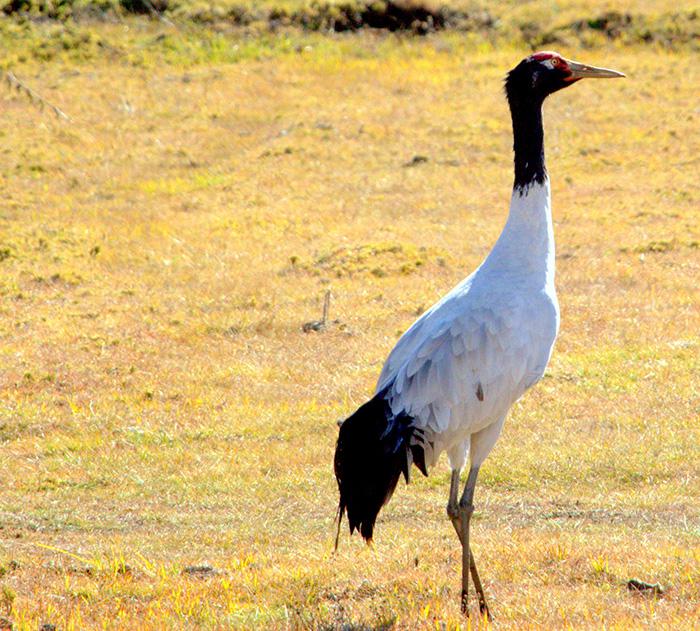Tshewang Lhamo
Conserve Black necked crane and its habitat through community involvement in Bumthang valley.

The Black-necked Cranes (Grus nigricollis; Grus: Cranes, Nigri: black, collis: neck) are the most mysterious and the last to be discovered of the fifteen species of cranes in the world (Chandhan, 2004). They are endemic to Tibetan Plateau and the adjacent regions in the Himalaya to the south and Yunnan-Guizhou Plateau to the east. The cranes breed in high altitude alpine wetlands in spring and summer, and migrate to lower altitudes in autumn. The global population of Black-necked Cranes are estimated to be 10,070 - 10,990 individuals of which about 500 winters in Bhutan every year (Royal Society of Protection for Nature, 2013). Winter habitat in Bhutan includes Phobjekha, Bumdelling, Bumthang and Khotokha areas.
Bumthang is considered as one among major winter habitats of crane in Bhutan, yet there exist no detail information on roosting and foraging sites. The habitat maps are still not available and inhabitants presumably know very less about the bird. With the modern development such as mechanized farming and wetland drainage for settlement expansion, the threats on bird and its habitat has increasingly become a concern. Most of the wetlands are already converted for agricultural and infrastructural purposes posing a long-term threat to the survival of the birds and other associated species. Birds normally feed on fallen grains from the harvest that remains undisturbed from October to April, however, with provisions of mechanized farming, winter months are also becoming farming season, restricting the feeding areas of crane. The threats is also intensified by increasingly use of chemical fertilizers in the farm.
Most importantly, potentially significant threat lies in the changing perceptions of the local people that may undermine the cultural values that have been protecting these cranes until now. Erosion of the people’s goodwill towards the cranes could lead to insensitive development and a rapid degradation of its habitat.
Thus, through this project, it will bring people together from various walks of life to interchange and discuss on conservation works. Together with awareness programs, the habitat areas will be mapped and conservation threats will be assessed. The communities will be involved in promoting and implementing conservation works right from planning stage.